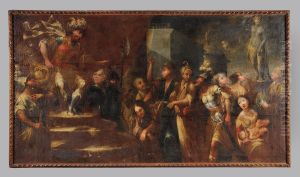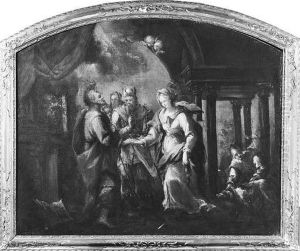Gianantonio Guardi Paintings
Gianantonio Guardi was an Italian painter born in 1699 in Vienna, Austria, though he spent most of his career in Venice, Italy. He was a member of the prominent Guardi family, which included his brother Francesco Guardi, who would later become a famous vedutista (painter of vedute or detailed, usually large-scale paintings of cityscapes or other vistas).
Gianantonio initially trained under his father Domenico Guardi, who was a minor painter from Trentino, and later he may have been influenced by the work of Antonio Balestra and Sebastiano Ricci. His early work is little known, and his career as an independent artist did not begin until the 1730s. In those early years, he was involved in the family workshop.
His work included religious commissions and genre scenes, and he was known to have painted altarpieces for various churches in Venice. However, his work was somewhat overshadowed by that of his more famous brother, Francesco Guardi, who is renowned for his Venetian vedute and capricci (imaginative architectural fantasies).
Gianantonio's style was a blend of the late Baroque and early Rococo, and he was adept at handling color and light. Despite his artistic talents, Gianantonio never achieved the same level of fame as his brother. He died in 1760 in Venice. After his death, many of his paintings were often attributed to his brother or to other artists, which has made it difficult to fully assess his oeuvre and individual style.

